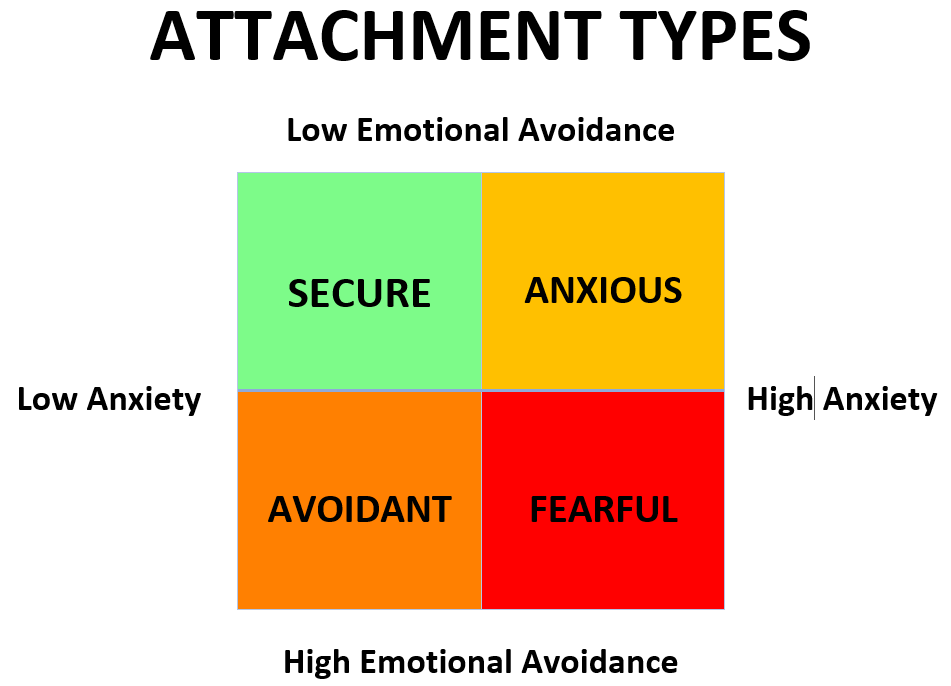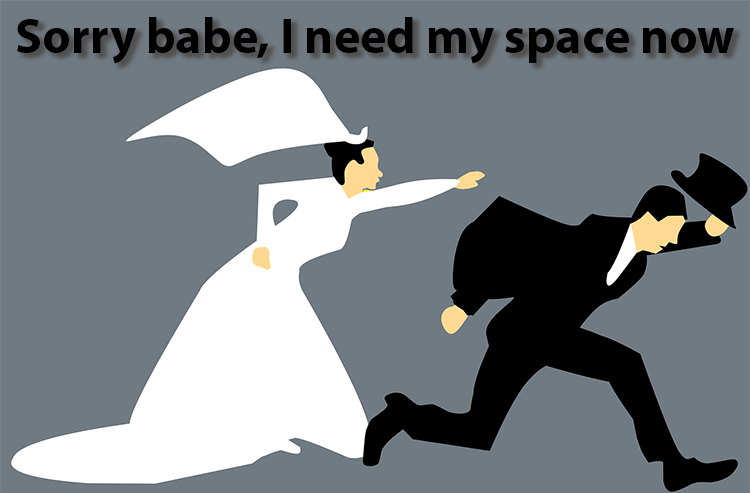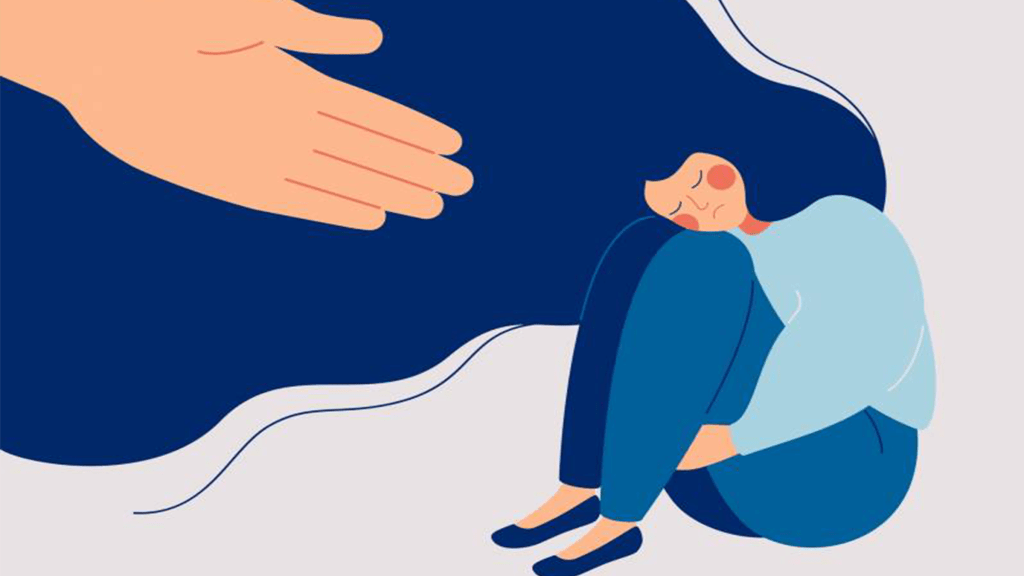Do you sometimes feel like you just can’t get close to people? Do you find yourself pushing others away, or feeling like you don’t need anyone? If so, then you may have a dismissive-avoidant attachment. This is a type of attachment style that is characterized by feelings of detachment and avoidance of intimacy. In this blog post, we will discuss what dismissive-avoidant attachment is, the signs and symptoms, and how to deal with it.
Contents
- 1 What Is Attachment?
- 2 Different Types Of Attachment
- 3 What Is Dismissive-Avoidant Attachment?
- 4 Symptoms of Dismissive-Avoidant Attachment
- 5 Causes of Dismissive-Avoidant Attachment
- 6 Impacts of Dismissive-Avoidant Attachment
- 7 Treatment for Dismissive-Avoidant Attachment
- 8 Helping Someone With Dismissive-Avoidant Attachment
- 9 Conclusion
- 10 A Word From Therapy Mantra
What Is Attachment?
 Attachment means different things to different people. But in general, it refers to a strong emotional bond that develops between two people who are close to each other. This bond is forged through the exchange of physical and emotional signals.
Attachment means different things to different people. But in general, it refers to a strong emotional bond that develops between two people who are close to each other. This bond is forged through the exchange of physical and emotional signals.
People usually become attached to others during times of stress or vulnerability. For example, a baby becomes attached to her parents when she’s relying on them for food and protection. Over time, this attachment grows into a deep connection that helps the baby feel safe and secure.
Different Types Of Attachment

There are three primary types of attachment: secure, dismissive-avoidant, and anxious-preoccupied. Each one describes how someone interacts with others in relationships.
Secure Attachment
Secure attachment is when one feels comfortable depending on others and trusts that they will be there for them. People with secure attachment feel confident in their relationships and are able to give and receive love freely.
Dismissive-Avoidant Attachment
Dismissive-avoidant attachment is when one distances themselves from others, either physically or emotionally. People with dismissive-avoidant attachment often have a hard time trusting others and can be quite independent.
Anxious-Preoccupied Attachment
Anxious-preoccupied attachment is when one is constantly worried about the relationship and whether or not the other person loves them back. People with anxious-preoccupied attachment often need constant reassurance from their partner, which can be draining for both parties involved.
What Is Dismissive-Avoidant Attachment?
 Dismissive-avoidant attachment is a type of insecure attachment that is characterized by a lack of affective warmth and responsiveness from caregivers.
Dismissive-avoidant attachment is a type of insecure attachment that is characterized by a lack of affective warmth and responsiveness from caregivers.
Individuals with dismissive-avoidant attachment often feel neglected or unsupported by their caregivers, which leads to them becoming emotionally distant and detached from others.
They may also have difficulty trusting others and tend to be quite critical of themselves and others. This type of attachment also tends to be associated with higher levels of anxiety and depression.
Symptoms of Dismissive-Avoidant Attachment

Individuals with a dismissive-avoidant attachment may exhibit a number of symptoms, including:
Feeling Emotionally Distant
This sign also goes by the name emotional cutoff, which is when a person shuts down emotionally in order to protect themselves from feeling hurt. People with dismissive-avoidant attachment often have a hard time showing their feelings and tend to keep others at arm’s length.
Being Critical of Others
People with this type of attachment are often very critical of those around them, especially their romantic partners. They may find it difficult to be accepting and instead focus on the negative aspects of relationships.
Having Low Self-Esteem
Individuals who struggle with dismissive-avoidant attachment often have low self-esteem. This comes from feeling neglected or unsupported by caregivers during childhood. As a result, they may feel like they’re not good enough for anyone. It also leads to a general mistrust of others.
Suppressing Emotions
Emotions are often suppressed in order to avoid feeling the pain of rejection or abandonment. People with dismissive-avoidant attachment often have a hard time dealing with their emotions and will do anything to avoid them.
Tendency Towards Isolation
People with this type of attachment often prefer to be alone rather than socialize with others. This is because they feel uncomfortable around others and don’t trust that anyone would want to be around them. It always leads to a feeling of loneliness.
Avoiding Emotional Closeness
This also means avoiding physical closeness. People with dismissive-avoidant attachment don’t want to be too close to anyone in case they get hurt again. This can lead to problems in relationships down the road.
Causes of Dismissive-Avoidant Attachment

There are many causes of dismissive-avoidant attachment, but the most common is neglect or emotional abuse from caregivers. This can be due to a number of factors, such as:
Lack of Affection
Lack of responsiveness or emotional warmth from caregivers can cause children to develop a dismissive-avoidant attachment. When children don’t feel loved or supported by their parents, they will often find other ways to cope, such as distancing themselves emotionally.
Separation Anxiety
If a child is always worried about being separated from their caregiver, this can also lead to the development of a dismissive-avoidant attachment. This usually happens when the child feels like they’re not good enough for their parent and that they will be abandoned if they leave.
Rejection
If a child is constantly rejected by their caregivers, it can cause them to become emotionally distant and mistrusting of others. They may start to believe that nobody wants them around and develop feelings of self-hatred.
Neglect
If a child is neglected by their caregivers, they may start to feel like they’re not important or valuable. This can cause them to become emotionally detached from others and develop a sense of isolation.
Lack of Empathy
Empathy is the ability to understand and share the feelings of others. If a caregiver is unable to do this, it can cause a child to develop a dismissive-avoidant attachment. This happens when children feel like their emotions are ignored or misunderstood by their parents.
Lack of Knowledge
Lack of knowledge about attachment can also lead to the development of a dismissive-avoidant attachment. If caregivers don’t know how to properly respond to their child’s emotional needs, they may start to withdraw emotionally.
Lack of Structure
If there is a lack of structure or predictability in a child’s life, it can lead to the development of a dismissive-avoidant attachment. This happens when children feel like they’re always being thrown into chaos and don’t know what to expect from their caregivers.
Trauma
Any kind of traumatic experience can cause a child to develop a dismissive-avoidant attachment. This may include physical or sexual abuse, emotional neglect, or being in an unstable home environment.
Impacts of Dismissive-Avoidant Attachment

There can be a number of impacts from having a dismissive-avoidant attachment, such as:
Difficulty In Trusting Others
This can be one of the major impacts of having a dismissive-avoidant attachment. People with this type of attachment often have a hard time trusting anyone, because they’ve been hurt in the past. This can lead to problems in relationships and make it difficult to form close bonds with others.
Difficulty Expressing Emotions
People with a dismissive-avoidant attachment often have trouble identifying and expressing their feelings. This is because they’ve learned to suppress them in order to avoid pain. As a result, they may seem unemotional or indifferent to others.
Difficulty Handling Conflict
People with this type of attachment often have trouble dealing with conflict and will do anything to avoid it. They usually don’t want to deal with the uncomfortable feeling that comes along with conflict, so they’ll just shut down or withdraw.
Isolation
People with a dismissive-avoidant attachment often feel like they don’t fit in with others. This can lead to them feeling isolated and alone, which can be very harmful to their mental health.
Treatment for Dismissive-Avoidant Attachment

If you have a dismissive-avoidant attachment, there are treatments that can help you learn how to trust others and express your emotions. Some of these are:
DBT
DBT is a type of therapy that helps people learn how to deal with their emotions in a healthy way. It can be helpful for people with a dismissive-avoidant attachment because it teaches them how to express their feelings and handle conflict.
Cognitive Behavioral Therapy
CBT is another type of therapy that can help people change the way they think about themselves and others. It can be helpful for people who have trouble trusting others or handling conflict.
Interpersonal Psychotherapy
IPT is a type of therapy that focuses on the relationships between people. It can be helpful for people who have difficulty forming close bonds with others. It also helps people learn how to deal with conflict in a healthy way.
Medications
Medications are one such method of treatment for dismissive-avoidant attachment. If a person is struggling with symptoms like anxiety or depression, medications can help to treat those conditions and improve their mood.
Self-Help
There are also a number of self-help methods that can be helpful for people with a dismissive-avoidant attachment. These include things like journaling, meditation, and mindfulness exercises.
If you’re struggling with a dismissive-avoidant attachment, it’s important to seek out help from a therapist or counselor. There are treatments available that can help you learn how to trust others and express your emotions in a healthy way. Don’t hesitate to reach out for help if you need it.
Helping Someone With Dismissive-Avoidant Attachment

There are many things you can do to help someone who has a dismissive-avoidant attachment. Some of these include:
Listening
One of the most important things you can do for someone with a dismissive-avoidant attachment is to listen to them. Listen to what they have to say, and let them know that you’re there for them.
Validating Their Feelings
It’s also important to validate the person’s feelings. Let them know that their feelings are valid and that you understand what they’re going through.
Helping Them Express Their Emotions
You can also help the person express their emotions by providing a safe space for them to do so. Encourage them to talk about how they’re feeling, and don’t judge or criticize them.
Helping Them Deal With Conflict
You can also help the person deal with conflict by teaching them how to handle it in a healthy way. Show them how to express their feelings and listen to what the other person has to say. This can help them to resolve conflicts in a more productive way.
Conclusion
The dismissive-avoidant attachment style can be difficult to deal with, but there are treatments available that can help. If you or someone you know is struggling with a dismissive-avoidant attachment, don’t hesitate to reach out for help. There are people who can help you learn how to trust others and express your emotions in a healthy way.
There can be a lot of stigmas attached to mental health issues, but it’s important to remember that you’re not alone. Millions of people struggle with the same things you do. You’re not defective or broken; you just have a different way of looking at the world. And that’s okay.
A Word From Therapy Mantra
Your mental health — your psychological, emotional, and social well-being — has an impact on every aspect of your life. Positive mental health essentially allows you to effectively deal with life’s everyday challenges.
At Mantra Care, we have a team of therapists who provide affordable online therapy to assist you with issues such as depression, anxiety, stress, relationship, OCD, LGBTQ, and PTSD. You can take our mental health test. You can also book a free therapy or download our free Android or iOS app.


